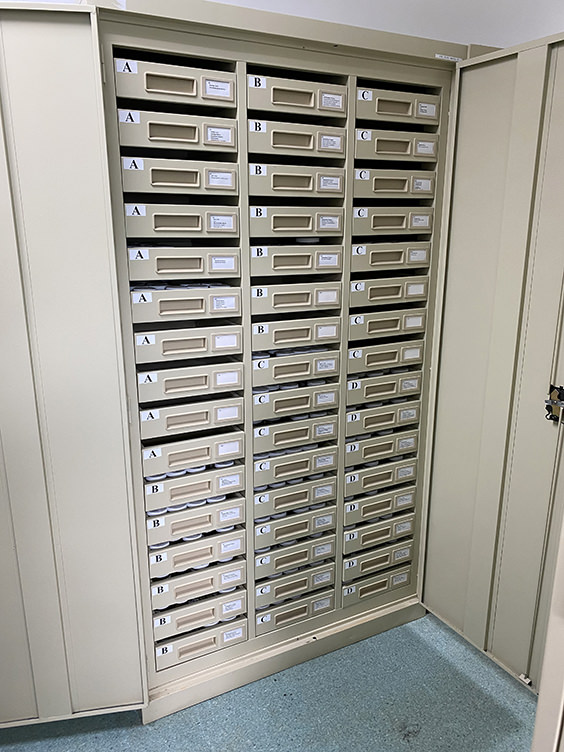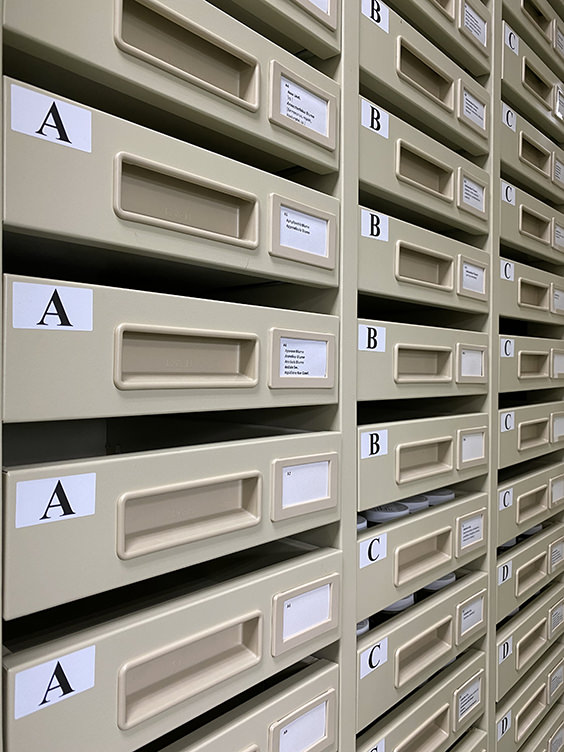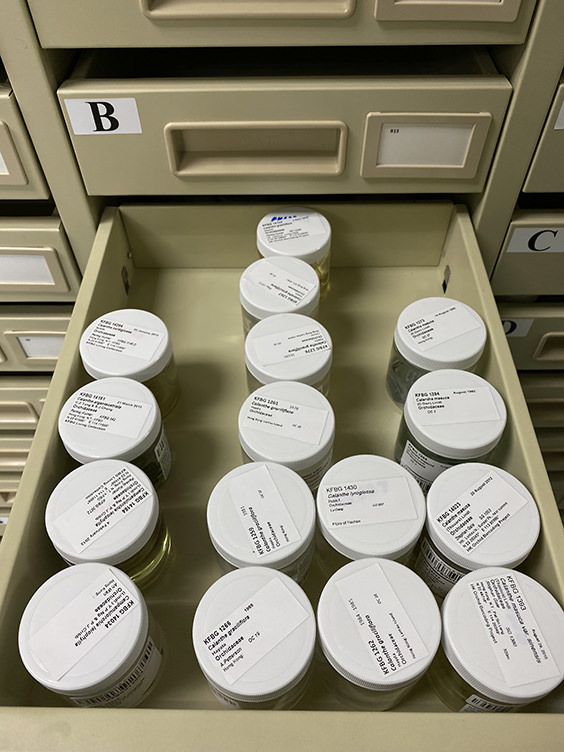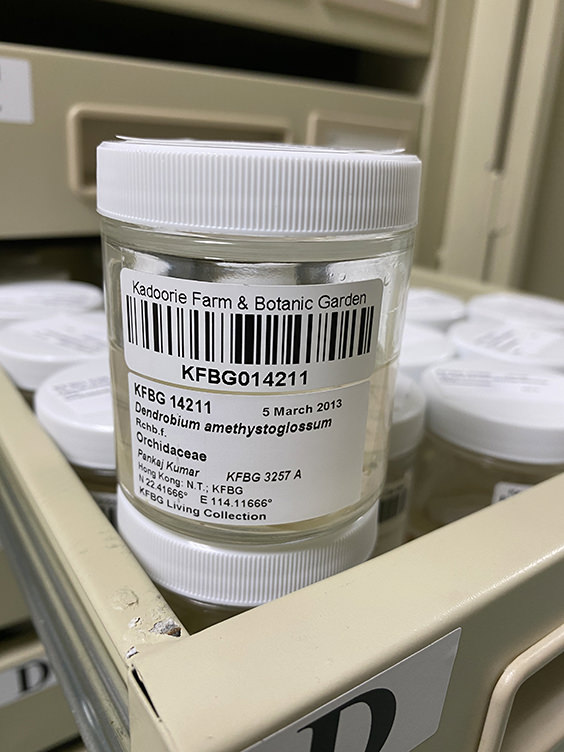
Depending on the texture, shape and size of the plant being preserved, the most appropriate method of storage will vary. Plants with complex, three-dimensional flowers, for example, are best preserved in liquid. This ensures that the taxonomic insights they provide are not lost were they to be dried and pressed.
Orchids are a good example: their flowers tend to be very intricate and their accurate identification usually requires microscopic observation of faithfully preserved floral anatomy. At KFBG, as in herbaria the world over, orchid specimens are preserved as so-called wet specimens in a mixture of formaldehyde, alcohol and acetic acid (abbreviated to FAA, and commonly referred to as ‘spirit’).


Our wet specimen room holds a collection of around 1500 spirit-preserved specimens representing over 30 different plant families – mostly orchids, but also species of Lauraceae, Fabaceae and Zingiberaceae, among others. Since formaldehyde is a hazardous chemical, our spirit collection is housed in an air-tight room with continual circulation, filtering and replacement. When a specimen is needed for study, it is firstly transferred to a container of alcohol, so that it can be manipulated and observed without risk. Our collection is an important resource for the study of the orchids of Hong Kong.


